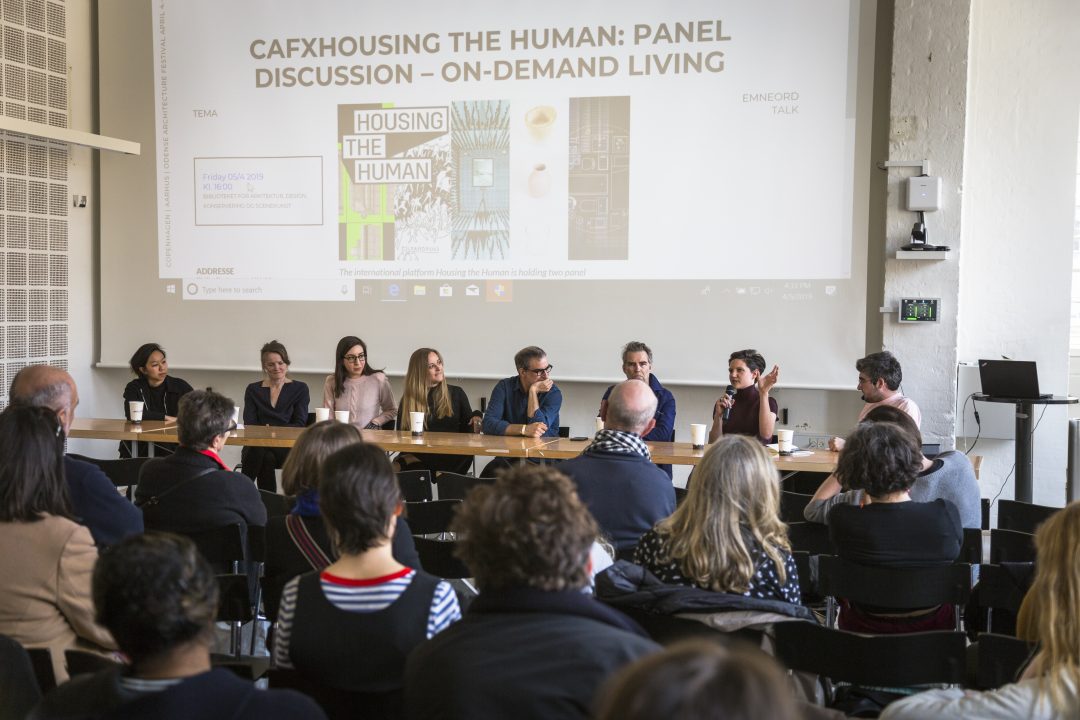
Anja Neidhardt: Josephine Michau, we are now in Copenhagen where Housing the Human is visiting the Architecture Festival that you co-founded. What are the main unique characteristics of CAFx and where do you see the link to Housing the Human?
Josephine Michau: We are the only festival taking place in Copenhagen focusing on architecture. For us it is about widening up the field and stating that architecture is not only for architects. An effective way of doing this is through films. We can bring the world into cinema and from there we can unfold various issues: the density in cities, the struggle to secure affordable housing, also climate change and migration, for instance. We are experiencing these issues in Copenhagen, but also on a global level. And Housing the Human is addressing them.
Freo Majer: The Danish perspective is very social and the magic word “welfare” is seen as important for communities to find ways of harmonious co-existence. As a German I tend to doubt this concept. However, to me it seems that CAFx does not only draw wonderful, utopian images. The festival poses realistic and practical questions. This is what we all wanted to do with Housing the Human. For us, prototyping is something radical and physical – not just interesting thoughts, but taking material in our hands and shaping forms. I think the aspect of exploring space through film is very convincing, because it is about human beings and their experience with and in space.
AN: How do you mentor the participants of Housing the Human?
FM: I wouldn’t call it mentoring in the classical sense. We accompany the participants over the whole course of the development and try to bring in expertise and infrastructure. Their demands and ambitions change all the time, and we react. We are very ambitious and enthusiastic about “radical freedom,” as we say. We try to give a nourishing ground, so that whatever happens may happen.
JM: We also bring in people who we call “experts” to challenge the development of the prototypes. So we have the public, the artistic directors—us—who follow the projects since the beginning and co-create them somehow, and then we have experts from various fields posing critical questions.

AN: What is your definition of innovation and how does it influence your perspective on Housing the Human?
Pippo Ciorra: The architecture world finds itself in a continuous dialogue with what happens outside its limits: We certainly need to preserve some core knowledge. It will help designers to deal with space and it will tell them how to put one stone on top of the other. But there is also the urgent need of expanding this knowledge, and I think Housing the Human is a wonderful device to experiment within this frame, to test the ground and the limits of architecture.
AN: In the creative fields there are many projects that use speculative design. What is crucial when it comes to imagining how people might live in a few years? Which aspects are easily overlooked or underestimated?
Jan Boelen: Speculations function within a certain context, which is the exhibition space. As soon as they are taken out of it they start their own life—and they may become self-fulfilling prophesies. Since Housing the Human does not directly link projects to a need, but gives a safe space where everything is possible, we indeed end up with speculations. So in fact it is very dangerous what we are doing. But if we wouldn’t do it, someone else would formulate these ideas with different intentions and we would not be able to react.
FM: I am also convinced that the participants would never be interested in innovating in a credulous sense. They all have a dark or subversive perspective on innovation. They see what is happening and how certain disruptions influence our lives, but they would never say “I can solve it.” In this sense their innovation is a purely social. They try to learn technology, to understand and use it, but they don’t aim for technological change.
JB: For me innovation is much like a new understanding of the complexity of society. By talking about shared spaces and collaborative practices, the projects are fundamentally questioning the traditional pre-configurations of society. Therefore I am happy that the exhibition is now presented in a library, because Housing the Human is knowledge production.
JM: KADK Bibliotheket is indeed the perfect location for Housing the Human, because it is the library of the creative schools. It combines the fields of architecture, design, theatre and film, and therefore has a reflection of all these disciplines.